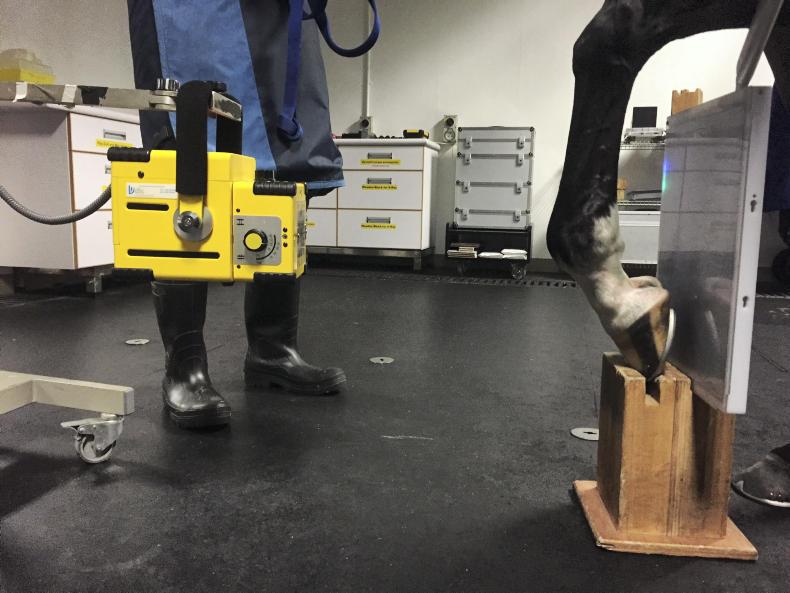
LOYALTY CODE:
The paper code cannot be redeemed when browsing in private/incognito mode. Please go to a normal browser window and enter the code there

LOYALTY CODE:
The paper code cannot be redeemed when browsing in private/incognito mode. Please go to a normal browser window and enter the code there
This content is copyright protected!
However, if you would like to share the information in this article, you may use the headline, summary and link below:
Title: Michael Slavin: Are we importing performance at the expense of soundness?
There should be stringent conditions applied to the importation of young mares and young stallions from abroad, writes Michael Slavin
https://www.farmersjournal.ie/michael-slavin-are-we-importing-performance-at-the-expense-of-soundness-361628

ENTER YOUR LOYALTY CODE:
The reader loyalty code gives you full access to the site from when you enter it until the following Wednesday at 9pm. Find your unique code on the back page of Irish Country Living every week.

CODE ACCEPTED

You have full access to farmersjournal.ie on this browser until 9pm next Wednesday. Thank you for buying the paper and using the code.

CODE NOT VALID
Please try again or contact us.
For assistance, call 01 4199525
or email subs@farmersjournal.ie
Sign in

Incorrect details
Please try again or reset password
If would like to speak to a member of
our team, please call us on 01-4199525
Reset
password
Please enter your email address and we
will send you a link to reset your password

If would like to speak to a member of
our team, please call us on 01-4199525
Link sent to
your email
address
![]()
We have sent an email to your address.
Please click on the link in this email to reset
your password. If you can't find it in your inbox,
please check your spam folder. If you can't
find the email, please call us on 01-4199525.
![]()
Email address
not recognised
There is no subscription associated with this email
address. To read our subscriber-only content.
please subscribe or use the reader loyalty code.
If would like to speak to a member of
our team, please call us on 01-4199525
 This is a subscriber-only article
This is a subscriber-only article
Update Success !

Usually when you meet legendary international dealer Tommy Brennan, he is in good humour and greets you with a happy “hello”.
But on occasion he could be a bit down because a good sale had fallen through due to the horse failing the X-ray.
Down through the years, people like Tommy had built their reputation on the soundness and longevity of the Irish horse.
But the question comes to mind: are we putting that trademark in jeopardy through the importation of hereditary unsoundness?
In a recent article, Irish vet Hugh Suffern had this to say: “Nowadays, radiographs are a non-negotiable part of the pre-purchase examination. If a horse is being sold abroad, it must have clean X-rays.”
The big problems include osteochondrosis (OCD) or bone chips, and navicular disease, which have been declared to have a “clear hereditary component”.
If these are impeding horses being sold out of Ireland, then it should work both ways. Just as strict a regime should apply to horses, particularly young stallions, being imported into Ireland.
Interesting statistics
Now, here is a very interesting statistic: a recent study of several hundred young horses being sold out of Ireland showed an incidence of just 8% for OCD, while the average for some Continental breeds stands at 40-50%.
The fact is that despite some shortcomings in our previous stallion inspections for the Approved book, we did manage to weed out a good deal of these hereditary undesirable conditions in our breeding stock.
The present, more strict form of stallion inspection will serve the same purpose. But it will only do that if young stallions being brought into the country on the basis of performance pedigree are put through the system.
It was good to see at the most recent inspections in Cavan that a number of our top breeders did just that. But it would appear that there are more that should have done the same.
Ireland’s reputation as a horse heaven in terms of land, grass, climate, etc, is at stake here.
There should be stringent conditions applied to the importation of young mares and young stallions from abroad and the most basic of these should be an examination just as strict as that which is applied to horses being sold out of Ireland.
This, in addition to participation in our HSI stallion inspections and mare inspections, can help ensure that we are not importing performance at the expense of our valued soundness.
Since some of these conditions like OCD or navicular can leapfrog generations, bad results may not become immediately apparent but can in time muddy our breeding later on.
As Hugh Suffern says: “Failure to exclude the unsound traits from our breeding stock will increase the chances of disappointment for breeders, producers and buyers at point of sale.”
Michael Slavin: Our equine voice in Brexit debate
Michael Slavin: Hopeful signs at stallion inspections
SHARING OPTIONS: